Newly declassified records released by The National Archives on Tuesday reveal the full extent of internal government conflict over the future of the EH101 Merlin helicopter during the final years of the Thatcher government.
The latest Cabinet Office and Prime Minister’s papers release includes 200 digitised files spanning the Thatcher, Major and Blair administrations. Among them is a tranche of material exposing how, in 1990, a spiralling procurement crisis and interdepartmental row nearly led Britain to abandon its domestically-developed Merlin in favour of the cheaper, American-made Seahawk.
At the core of the controversy was the soaring cost of the EH101 programme, initially projected in 1983 by then-Defence Secretary Michael Heseltine at £1.1 billion for development and production of 50 naval aircraft. By 1990, a private memo from a senior official to OD(90)9 concluded: “Nearly £0.9 billion has been spent or committed already; but we still face further costs estimated at nearly £1.8 billion… If the order were confined to 50 helicopters… they will cost almost £53 million each.”
This was far more than the updated cost estimate and almost double the original projection adjusted for inflation, which had placed the total at £1.6 billion. The EH101 had yet to enter service and was already four years behind schedule.
As these costs became politically untenable, the Prime Minister’s Defence and Overseas Policy Committee (OD) ordered a review of alternative anti-submarine warfare (ASW) force options, specifically including platforms other than the Royal Navy’s EH101, and additional maritime patrol aircraft (MPA). According to a covering letter to Charles Powell at Number 10, the brief was to assess “a force mix which would consist predominantly of nuclear-powered attack submarines (SSNs); a force mix which would consist predominantly of MPA; [and] the relative merits of the EH101 and the United States Seahawk LAMPS III helicopter.”
The review acknowledged the strategic role of the Royal Navy’s planned ASW fleet. These would consist of “SSNs, ASW carriers, Type 23 frigates with helicopters, and MPA, assisted by seabed surveillance and intelligence systems.” The operational doctrine envisaged RN and US SSNs deploying into the Barents and under the polar ice cap to shadow Soviet strategic submarines, while “frigates, operating independently or in conjunction with one or more of the RN’s ASW carriers, would search the Norwegian Sea for Soviet submarines.”
Within this structure, the ASW helicopter played a central role. The review described the EH101 as being designed “to carry out autonomous operations at long ranges from its parent ship”, equipped with “passive and active sonobuoys, an active dipping sonar, radar, electronic support equipment and secure communications.” It could carry four torpedoes, and would be able to spend up to “four hours on task at 50nm, or three at 125nm,” although initial aircraft would be limited to shorter durations.
Alternatives were assessed in detail. The Sea King was deemed obsolete, lacking the speed, agility, and endurance to operate from Type 23 frigates. The Super Puma and NATO’s NH90 were considered too small or technologically immature. The US Navy’s Seahawk (LAMPS III), however, offered a plausible low-cost alternative.
According to the files, “LAMPS III comes closest in capability to the EH101 but falls some way short of the RN requirement… the processing of data from the helicopter’s radar, sonar, and electronic equipment is carried out on board ship. This… limits the effective operational range of the helicopter.”
Treasury officials were not convinced by this distinction. One memo flagged that the Seahawk “could be built by Westlands, for approximately £1.1 billion… nearly £0.7 billion cheaper than the outstanding costs of procuring 50 Merlins.” Another stated bluntly: “This is a deplorable story.” Despite MOD claims that Seahawk could not match EH101 capabilities, the Treasury observed: “the cost of covering this gap, if it could be done at all, could be considerable.”
The files reveal a tense interdepartmental standoff. While the Ministry of Defence remained committed to the Merlin, others in government were openly sceptical. A note to OD Committee members highlights the gap between departments: “The Treasury has not seen the operational analysis supporting the case for these additional MPA.” Another document questioned the logic of “pay[ing] so much extra (£360m) for a new prime contractor” to control a programme that was already contractually bound to deliver.
The Defence Secretary, Tom King, pushed back hard. In a submission to OD, he argued that “the attached paper clearly underlines the case for the capability offered by the EH101, operating from the frigates and other ships which have been designed for this purpose.” King’s memorandum concluded that a submarine-heavy force would be too expensive, and that full reliance on MPAs would not provide a “sensible option.” On balance, he insisted, “EH101 represents the better buy.”
Even so, scepticism remained in Downing Street and the Treasury. One internal assessment cautioned: “Before entering into any further substantial commitments, we need to be fully satisfied that there is no acceptable alternative course.” Another floated a pause: “We might consider calling for some further advice on this before we make any new commitments to production expenditure this summer.”
Ultimately, ministers backed the MOD recommendation to proceed with the first 50 EH101s, while deferring decisions on a second batch of 52 aircraft and the potential upgrade to a Mark II standard. The final compromise allowed production to go forward—barely.
What also emerges from the files is the extent to which industrial policy, particularly Westland’s future, hung in the balance. The EH101 was a joint UK-Italian effort involving Westland and Agusta. Treasury officials asked “whether we can reclaim some of the misused funding from the companies (Westlands and Agusta) and from the Italian government,” and questioned whether export orders could reduce the burden on UK taxpayers.
The question of appointing a £360 million prime contractor became a flashpoint. While some believed this could restore discipline to a poorly managed programme, others argued “we need to be clearer on precisely what value added” this would bring.
The newly released files make clear that the EH101 Merlin programme very nearly collapsed under the weight of its own ambition. Only a combination of operational necessity, MOD pressure, and the lack of credible alternatives saved it from cancellation.
Had ministers been more inclined toward short-term savings, or had the Seahawk been marginally more capable, the Royal Navy might today be flying an American helicopter built under licence in Yeovil rather than the domestically developed Merlin.
As it stands, the EH101 went on to become one of the UK’s most important rotary-wing platforms, with export success under the AW101 designation. But as the files reveal, that success rested on a knife edge.



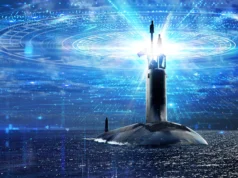

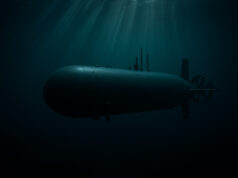


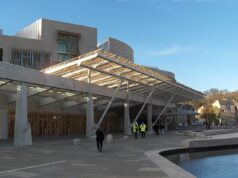
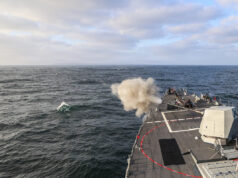
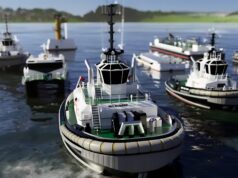
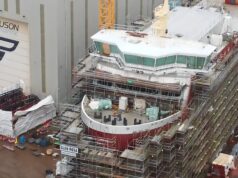
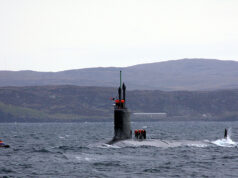

The Merlin costs blow out that had a devastating effect on further defence investment decisions.
The assumption was that the same thing would keep happening. Even in programs where a drum beat approach would have made sense.
In a sense it consumed so much central government bandwidth that ‘defence discussion/investment fatigue’ became a thing.
Well they weren’t wrong. Plenty of subsequent examples including and not limited to the current mess that is the Ajax program.
Lessons just don’t seem to get learnt
What are we saying here? The Merlins are cr*p, they cost too much or both?
Thy cost too much and are too complex for what thy offer.
The Merlin’s are very, very good.
But the development program, as the article says, was terribly mismanaged.
That mismanagement lead to a unit cost [including R&D] that is quite extraordinary and lead to the usual small buy which is expensive [per unit] to upgrade.
So why does that keep happening?
My guess is fragmented responsibilities. I’ll give two examples a small personal example and a recent analysis of HS2 (much shortened).
My own experience of being a Project Manager of a small analysis project was that the PM role was split between myself and a senior technical lead. I went on holiday for just 3 days and came back to find that the project had changed direction completely..! The customer desk officer and technical lead had agreed to the changes, but it turned out that the MoD head of section was not aware of the changes and was not impressed. Although our side was responding to the ‘customer’ and had the necessary paper work in place it still meant that significant portion of the budget was wasted and I came under pressure at the next project meeting. (Talking low £k’s not £m’s here, but still a pain and an unnecessary waste.) The other thing was that when we went to a meeting with MoD there were two of us in the room with upwards of twenty MoD bods in the room, most in uniform and most at SO2 level plus a one star and a sprinkling of SO1’s! It was in front of this glitterarti that I had to stand up for the efforts of my team! It was a small study that cut across all three services.
With regards to HS2. Planning permissions were the big driver of cost overruns and delays. A special act of parliament was undertaken to try and streamline the process or at least get the big issues sorted. Instead of getting a nice straight track that would allow fast trains to run overground multiple MP’s argued and ‘won’ concessions reach one with a cost implication. Much of the track is now in tunnels with only about 9 minutes runtime above ground I seem to remember. That is a huge cost right there! One minister reportedly congratulated a MP on costing the government another few hundred thousand pounds!
Once the bill went through parliament it turned out that there were still another 8,000 or so permissions required from local authorities and other institutions (not sure which!). In one case a temporary road was need to gain access to a site to build a key element for a tunnel (a drainage tank I think). It would require 60 heavy tracks over 12 days, just 5 per day. The locals got wind of it and objected and won so no road, no tank, no tunnel – back to the drawing board and more cost..!
The fundamental problem in both cases is that there are too many people involved in the decision making processes and not enough clear leadership. It sounds like the same issue for Merlin, poor lines of responsibility. I my experience, I was responsible for the good project management of a study, but I was junior to the Technical Lead – oops. Fortunately, I got on well with the technical lead and the line management understood the challenges and potential issue of the setup, that and the fact that the main fault was with on the customer side, but had the fault sat with us I would have had a much tougher time I recon.
Responsibility without authority never ever works and yet it is the favorite setup in public institutions (and probably in many big organisations). Divide and control for the protection and advancement of the bods at the top who don’t actually deliver anything.
We short, we live in a democracy and until you can provide sufficiently strong leadership to get everyone behind an endeavour, be it a huge national or small local / component endeavour, costs will rise and timescales will slip.
Depressing I know but on the positive side for defence at the moment a national consensus appears to be emerging, I have even seen defence being mentioned as a priority by ‘voters in street’ being interviewed. That hasn’t been a thing for decades. There is still many opportunities for c**k ups and the HMT has far too much influence over individual projects of which its has no technical expertise, so cannot make a proper independent assessment of need. So MoD will often find itself with responsibility up only partial authority on key decisions. There is also the fact that MoD as had its key skill set eroded under the guise of ‘efficiency’ savings and so struggles to be an intelligent customer. Two examples of this are to down grading of financial controllers and the privitisation of the research establishments whose main role was not so much the invention of the next ‘thing’ but the understanding of and anticipation of the key technological developments.
We live in a democracy and everyone feels they have a right to have their say, fair enough, but they take that to mean that their views must be reflected in the decisions – wrong. Views can and should be listened to, but they can the discounted in the wider interests. Tough!
Cheers CR
Hi CR.
Thanks for taking the effort to write that.
I’d read of those HS2 details and the 9 minutes!
We live in a small densely populated country.
There are also a lot of nimbys. And they ignored the Great Central route for some reason.
Whatever, it seems to be a recurring theme in our country, poor management.
I suspect that British defense types have to develop weapons systems that are slightly/appreciably better performance than American ones. Otherwise the temptation to buy American is too great. Problem with that is, you really need to be cutting edge (American stuff is either pretty good, to world beating), and that can be VERY expensive.
The Whirlwind, Wessex and Sea King were, of course, all US machine built under licence. Wasp/Scout and the Lynx were, I think the only purely UK designed and built helicopters to be vaguely successful?
Lynx was jointly developed with France, Aerospatiale ( spelling)?.
Thanks Paul, I thought so, looked it up and Wikipedia said it was designed and built by Westland. I should have dug deeper! That really does leave Scout and Wasp. Even the Sycamore was a development of the Sikorsky H5 Dragonly, I think… oh and the Belvedere wasn’t a great success. I saw once once was I was about 6 flying near Builth Wells. I was at the Royal Welsh Show 1961. But now I’m rambling…
Lynx was a UK design shared with France in a Deal where we got French Puma and the Gazelle and they got Lynx. As usual, the French reneged their side of the bargain
It’s a British helicopter – NOT Anglo-French!
https://en.wikipedia.org/wiki/Sud_Aviation
In the end not buying the Sikorsky S-70 was the correct call as the UK helicopter industry is still here.
For now.
What I don’t understand is that Treasury assessments of costs never seem to take into account the benefits to HM Treasury of spending the money in the UK. Sure, Project X might be cheaper bought from a foreign supplier, but the workers on Project X are paying taxes in the UK… income tax, corporation tax, business rates, VAT. A US helicopter might cost £40m and a UK one £50m, but if all the latter is taken into account does the US one actually come out cheaper to the bean counters? Or are the bean counters actually incapable of counting beans?
I think it’s too complicated. It’s not as simple as buying British (all the taxes) or buying foreign (no taxes). All major defence supply chains are multinational these days. Consider how much is spent in the UK for an American design assembled in the UK. You need to figure what proportion of value added is UK and what American. How much is imported, and what proportion is being reimported having been sent to the States from the UK. I suppose now we are living in a world of tariffs it could simplify out a bit.
I think the Treasury attitude is that if we can’t count on money there might as well be no money. So it doesn’t bother to figure in potential exports nor the taxes on an unknown proportion of UK value add.
I believe the French and US essentially do add it all up. After all it’s only maths.
Given the way the way programmes are funded (especially the slowing down, spreading over many fiscal years with ‘funny’ accounting/ treasury practices) and (of course!) poor management from the UK MoD, one would be hard pressed to state that going with the yank solution the programme finances would not also have experienced cost blowout(s).
.
.
The UK, as with many other nations, need to decouple from the US defence industrial complex; this of course will have many benefits (least of all less reliance on yanks like trump (lowercase lack of respect the least he deserves) while simulating the high-end manufacturing defence industry, with their workers paying (more) taxes locally, something UK governments seem to have forgotten – and that these workers (and people in their circle) are voters 🤔
.
.
For me, give me a EHI01 Marlin any day of the week over a Seahawk blah 🙃
It would not have been cheaper in the end because we would have spent £Bs farting around upgrading them to what the RN wanted!
They could have never got them to what they want, Merlin is the size it is because that’s how big you need to make a rotor for everything the RN wants for its primary ASW rotor. As far as I’m aware it’s the heaviest medium lift rotor you can get and essentially has a 50% greater max takeoff weight than normal medium lift rotors.
Absolutely! Remember another Heseltine affair a few years later, the nuclear submarine maintenance facilities fiasco, when the new facility under build was moved from Rosyth to Plymouth? It’ll be so much cheaper, they claimed. It’ll save us £100m. Instead it cost us at least £700m extra and its capability was downgraded with no emergency dock. Just because we are told it will be cheaper, doesn’t make it true.
Second batch of 52! So 102 Merlin.
In the end, 44 were acquired.
Couple of crashes.
11 not updated.
30 remain.
Beyond maddening
We need a.follow on buy, even accounting for fact that drones will take on future roles
So – what is that 100 million a chopper?
Interesting report in Flight Global: the new boss of Leonardo Helicopters UK apparently has stressed the “criticality” for the business of winning the NMH order but believes that Leonardo can ‘grasp other opportunities’ like selling new AW101s to the Royal Navy.
It was a done deal long ago, all that remains is the cost, and how many below the requirement.
New Merlin are sorely needed, but I won’t hold my breath.
The scope of NMH seems to have undergone a series of Dr Who regenerations. The H145 buy killed the ambition of standardising on a single type to replace 5, and the Puma replacement bidding contest combined with the SDR has morphed it into a strategic review of all helicopters needs. The govt have clearly made a decision to choose Leonardo and UK industry ( Yeovil) to implement this strategy. So notwithstanding the H145 buy, which made sense because we had loads of H135s, NMH now = a Leonardo portfolio; a mix of AW149 + more Merlins + maybe adjustments to Wildcat numbers and types.
Yes, I agreed with the 145 purchase.
Why buy an expensive type for non deployable roles in Cyprus and Brueni, when a cheap type already in use will do.
Same with Dauphin. AFAIK it works fine and its been heavily modded for its specialist role, so why replace it. I don’t think they’re old frames.
Maximises the new NMH for its intended battlefield role.
My issue always remains that they’ll be bought in too few numbers at too high a price for political reasons, jobs. The other companies thought sod this it isn’t viable and pulled out.
I’d love more Merlin as FAA needs more as they stupidly didnt convert 11 and have put Crowsnest on it as well.
Wildcat I don’t see any change. The RN fleet is now so small 28 HM1 are enough. Wildcat for the Army were only 34, pitiful when they replaced 150 plus. But everyone keeps saying battlefield helis are obsolete. I don’t think so.
But any expansion is in Drones and UAV, not Helis.
Very expensive, but it did result in the best ASW helicopter in the world. The investment would be even more worthwhile if the RN brought more of the things, to replace the existing fleet. Norway just brought some for long range SAR because nothing comes close for safety and long distance over water opps.
The Blackhawk is a case in point: first flew in the early 70s, was upgraded in to the L version in the 90s with a composite rotor and the Mike version in the late noughts with fly by wire and more power.
Meanwhile the AW101: first flew in 1987. Navy/RAF examples built 1997-2002, will be expected to serve till 2040 (!!) have been rebuilt a couple of times. Minor upgrades to power, gearbox and ability to lift, but not major investment in a world beating platform. Will likely be replaced by some exceptionally gucci US made tilt-rotor……
Its maddening we spend all this money to build world beating kit, but unlike the US we don’t continually upgrade it, so skills wither, availability reduces, armchair commentators say “thats all very expensive, we should buy some [older, less capable] Blackhawks for $10m a pop….
May I, as an historian, with no particular attachment to any of our Services, point out that it wasn’t always such a shambles. The decision to build four Polaris submarines was taken before the Wilson govt took office in 1964. A time when the individual Services did their own buying and building. The Wilson govt “rationalised” that arrangement and brought purchasing “in house” to the MoD. But by that time the submarine contracts had been let and the RN got on with it. The four Polaris submarines were not only built on time, but below the estimated cost. Probably the last time that will ever happen unless drastic surgery is done on both the MoD and HMT.
The comment above in HS2 sums up our problems nicely. A little democracy is a good thing occasionally, as is a revolution.
On a positive note, the Canadian government’s cancellation of 50 EH101s back in the early 1990s by Chretien (worst PM until junior’s arrival) resulted in a $500m penalty for AW followed by an order for 15 SARS EH101s several years later. Typical pollie brilliance.
There was an internal fight in the Liberal party about the Merlins. Jean Chretien and Paul Martin were in full disagreement about this procurement.
Took another 17 years to finally replace the Sea Kings.
The replacement project for the Sea Kings started in 1983.
Know very little about helicopter capabilities but I’m told merlin is a very good helicopter and as a former infantryman I preferred getting on helicopters with ramps like chinook (as I was mortars and our packs weighed a ton) and from what I’ve seen the merlin has a ramp that for me does it lol